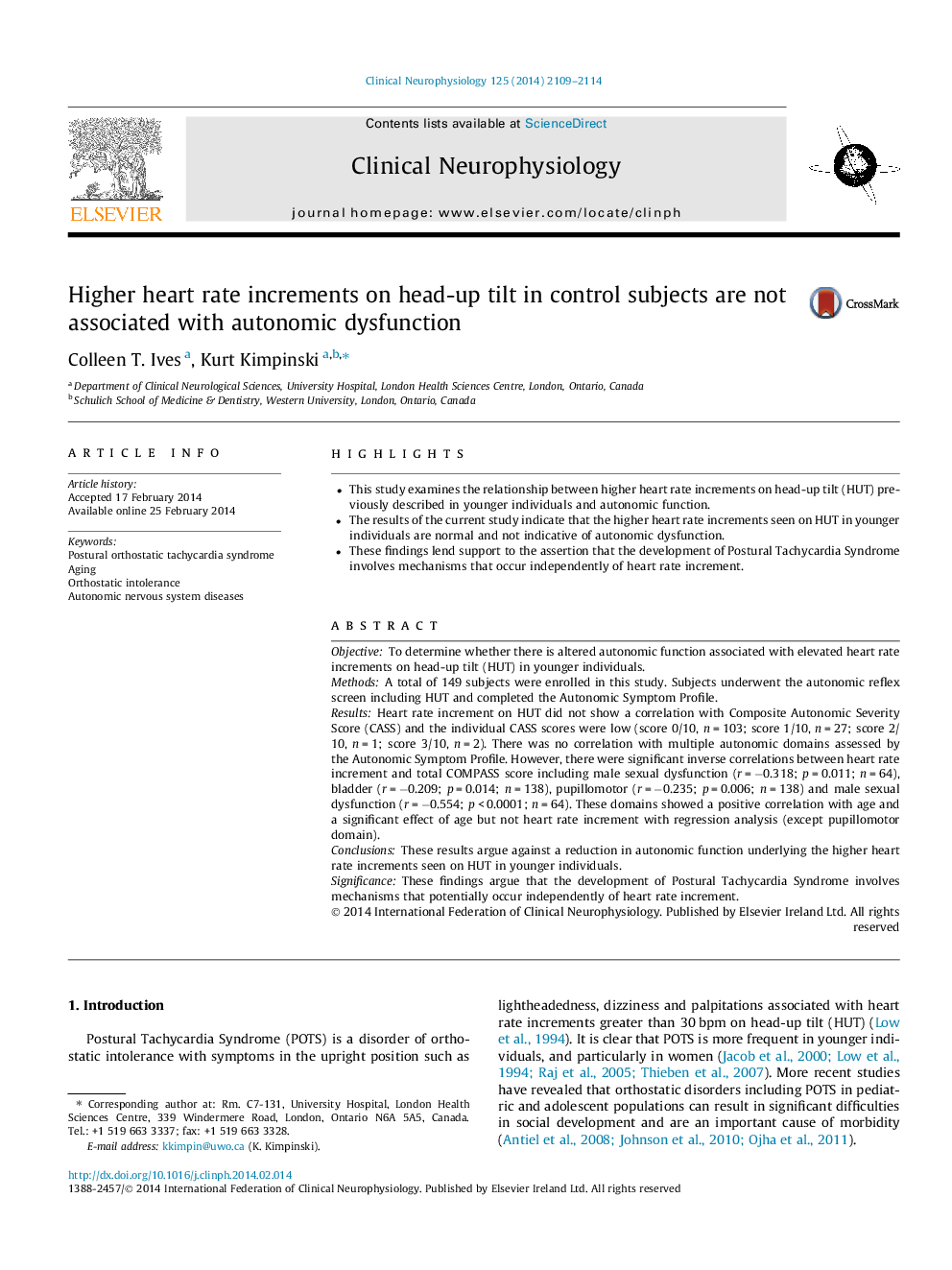| Article ID | Journal | Published Year | Pages | File Type |
|---|---|---|---|---|
| 3042712 | Clinical Neurophysiology | 2014 | 6 Pages |
•This study examines the relationship between higher heart rate increments on head-up tilt (HUT) previously described in younger individuals and autonomic function.•The results of the current study indicate that the higher heart rate increments seen on HUT in younger individuals are normal and not indicative of autonomic dysfunction.•These findings lend support to the assertion that the development of Postural Tachycardia Syndrome involves mechanisms that occur independently of heart rate increment.
ObjectiveTo determine whether there is altered autonomic function associated with elevated heart rate increments on head-up tilt (HUT) in younger individuals.MethodsA total of 149 subjects were enrolled in this study. Subjects underwent the autonomic reflex screen including HUT and completed the Autonomic Symptom Profile.ResultsHeart rate increment on HUT did not show a correlation with Composite Autonomic Severity Score (CASS) and the individual CASS scores were low (score 0/10, n = 103; score 1/10, n = 27; score 2/10, n = 1; score 3/10, n = 2). There was no correlation with multiple autonomic domains assessed by the Autonomic Symptom Profile. However, there were significant inverse correlations between heart rate increment and total COMPASS score including male sexual dysfunction (r = −0.318; p = 0.011; n = 64), bladder (r = −0.209; p = 0.014; n = 138), pupillomotor (r = −0.235; p = 0.006; n = 138) and male sexual dysfunction (r = −0.554; p < 0.0001; n = 64). These domains showed a positive correlation with age and a significant effect of age but not heart rate increment with regression analysis (except pupillomotor domain).ConclusionsThese results argue against a reduction in autonomic function underlying the higher heart rate increments seen on HUT in younger individuals.SignificanceThese findings argue that the development of Postural Tachycardia Syndrome involves mechanisms that potentially occur independently of heart rate increment.
